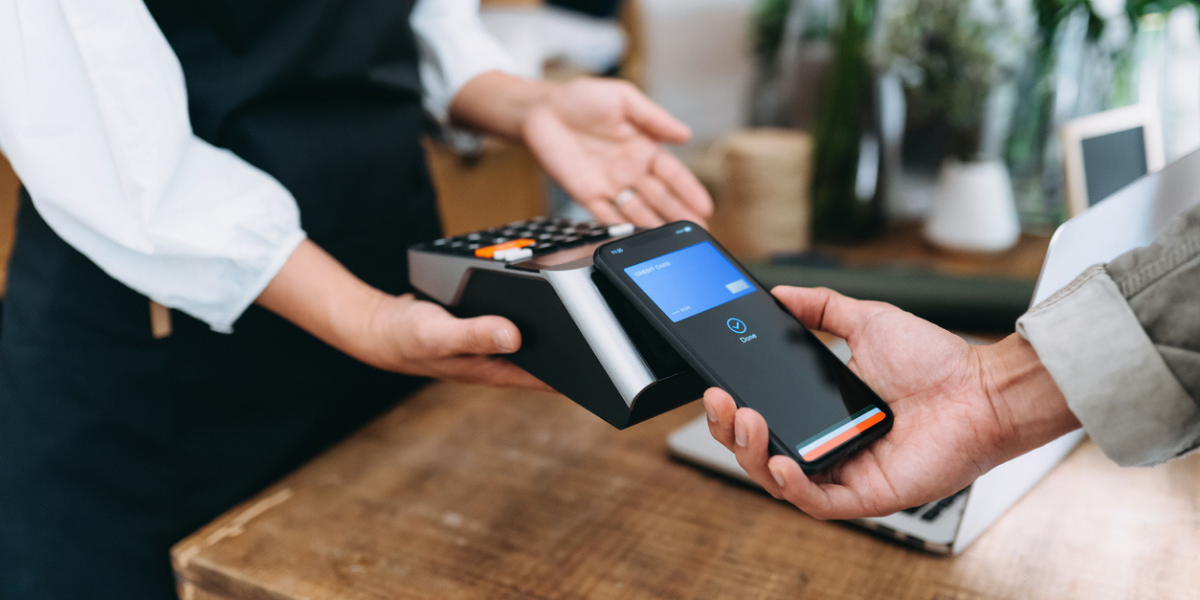Digital banking is more prevalent than ever, allowing you to handle most banking functions right from your computer or smartphone. Just how common is it? Around 78% of Americans prefer to do their banking digitally via a banking mobile app or bank website.
If you are one of the few who isn’t managing your finances from a phone, here’s what you should know about digital banking and its benefits.
What Is Digital Banking?
Digital banking eliminates — or at least reduces — the need to visit a bank branch in person. You can handle most banking tasks, including depositing checks, transferring money, or paying bills, directly from your computer or phone. You can use digital banking to manage your checking or savings accounts through the bank’s website or apps.
To take advantage of digital banking, you just need an internet connection, a device (such as a computer, tablet, or smartphone), and a bank account that offers digital banking features.
What Is a Digital Wallet?
Digital wallets, also known as e-wallets, are systems that store your payment information — such as your credit card or debit card numbers — and passwords. They allow you to purchase items online safely, or you can use mobile wallet apps like Apple Pay to pay for purchases at brick-and-mortar retailers that offer contactless payments.
What Are the Benefits of Digital Banking?
If you’re used to handling all of your banking tasks in person with the assistance of a bank teller, digital banking can be intimidating. However, there are some significant advantages to banking online:
1. Convenience
With the traditional banking experience, you have to drive to a local branch to deposit a check or transfer money. You have to stand in line and wait for an available teller, and you have to make sure you visit the bank only during its business hours.
With digital banking, there’s no need to leave home. You can handle most banking tasks right from your couch. And you can handle those tasks and view your account 24 hours per day, seven days a week.
2. Additional Security Measures
Digital banking is often safer and more secure than traditional banking. Since you don’t have to worry about keeping track of paper checks, deposit slips, or cash, there’s less risk of theft or fraud. And, if you use mobile wallet apps, you can pay for transactions faster and more securely than if you use a debit or credit card at the register.
3. Manage Your Money Anytime
If you use digital banking, you might find it’s much easier to manage your money. Since you have around-the-clock access to your account, you can deposit checks, view your balances, and more in minutes, not hours.
SouthEast Bank’s checking and savings accounts even integrate with QuickBooks, Quicken, and Mint, helping you create budgets and set limits for spending categories.
4. It Gives You More Control
By using digital banking, you have greater control over your money. You can handle everything from your account, such as paying bills, transferring money between accounts, and sending money to friends. You don’t have to rely on a bank to handle those tasks for you, so you have more autonomy.
Consider a High-Yield Checking or Savings Account
Digital banking offers financial benefits as well as convenience. Some banks, like SouthEast Bank, have a robust digital banking platform. You can choose a high-yield checking account to earn a return on your funds, and manage your money conveniently from your computer or mobile device.
Bottom Line
Digital banking can help you have more control over your finances through the convenience of your phone or computer. You have the benefits of extra security and around-the-clock money management through access to your accounts digitally. Enjoy the freedom and rewards that digital banking could provide for you financially.
Note: Links to other websites or references to services or applications are provided as a convenience only. A link does not imply SouthEast Bank’s sponsorship or approval of any other site, service or application. SouthEast Bank does not control the content of these sites, services or applications.
Information contained in this blog is for educational and informational purposes only. Nothing contained in this blog should be construed as legal or tax advice. An attorney or tax advisor should be consulted for advice on specific issues.




